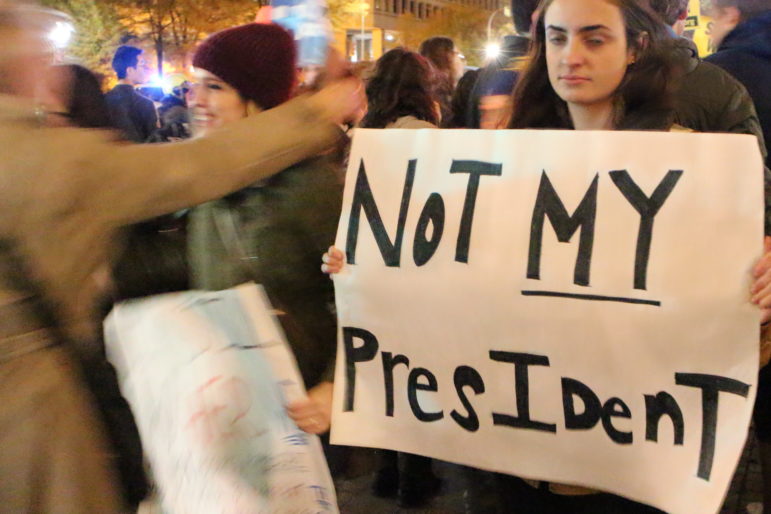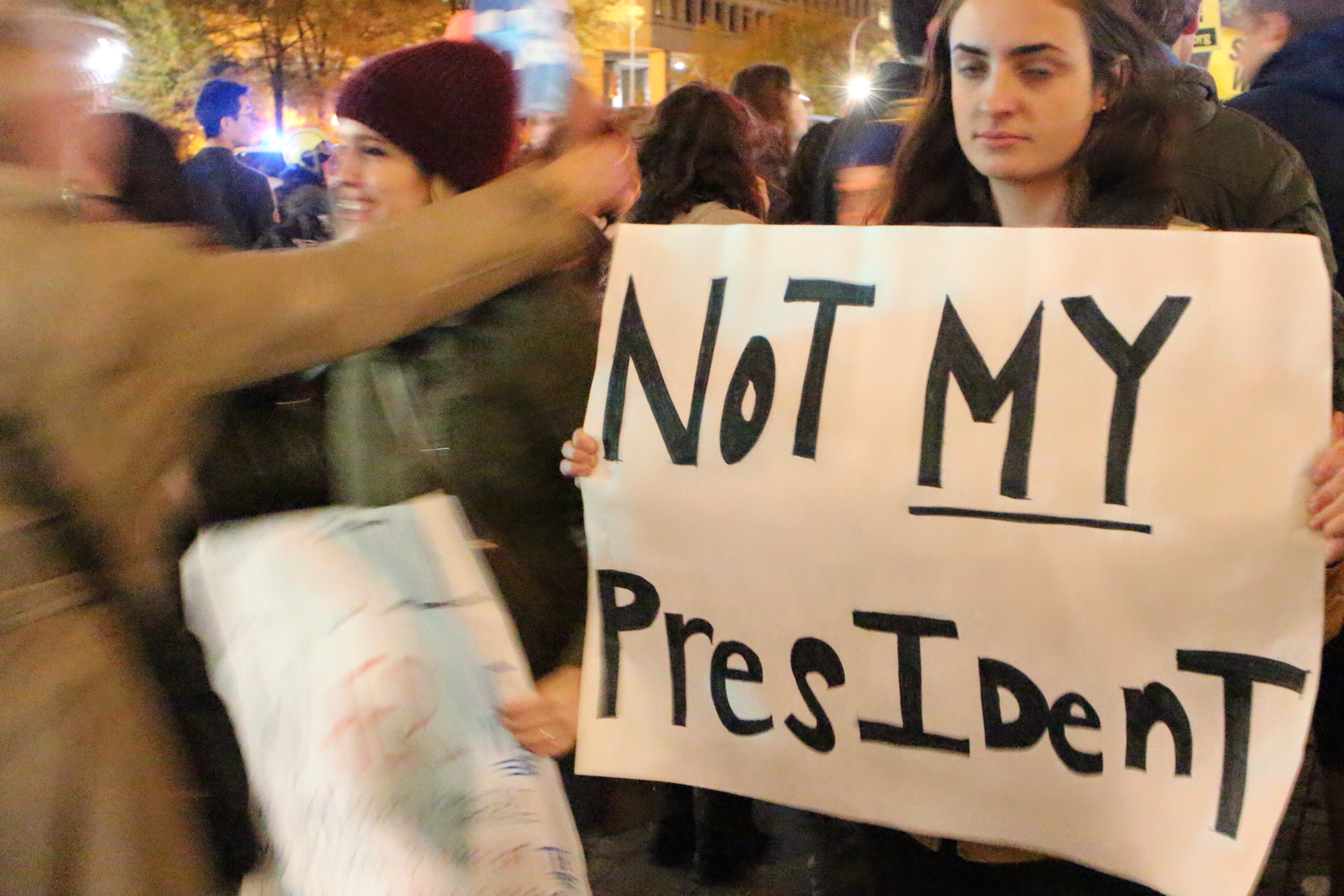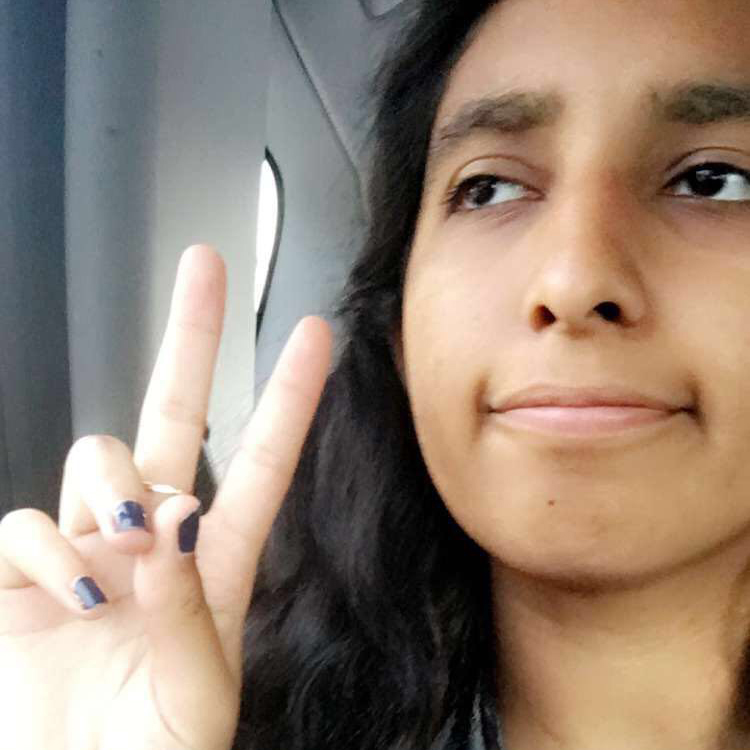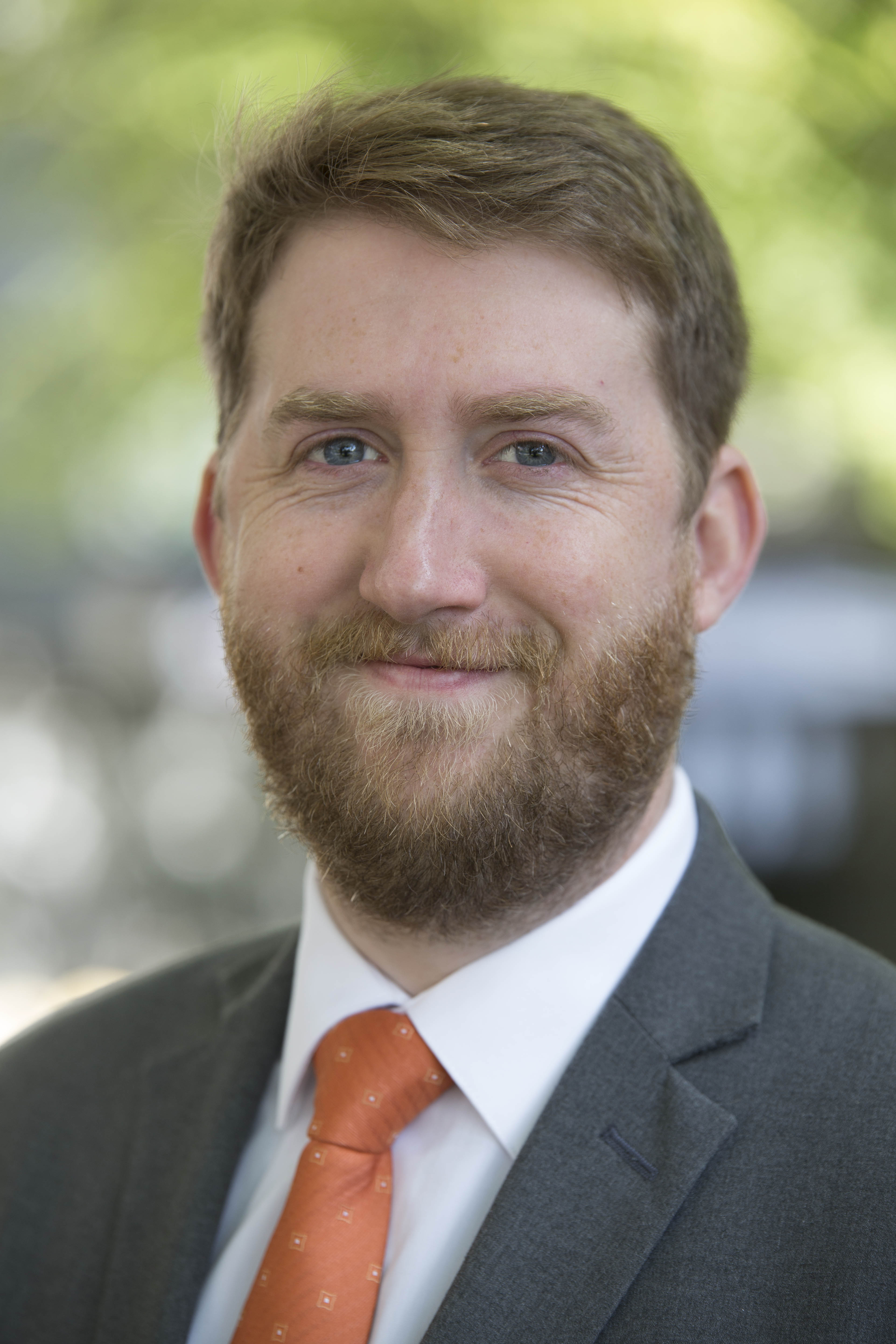
Allen Fennewald
People protesting election results in Washington, District of Columbia.
New data looking at the youth vote in the 2016 presidential race found they are also divided by race, and that a higher percentage of them vote Democratic than older voters.
Much of Democratic candidate Hillary Clinton’s support came from Latinos and African Americans. Eighty-three percent of young African-American voters selected her, along with 70 percent of young Latinos, according to research published Wednesday.
However, 43 percent of young white voters favored Clinton, compared to 48 percent for Republican President-elect Donald Trump, the report said. This support might have been key for Trump in heavily white states like Iowa and Ohio, according to The Center for Information and Research on Civic Learning and Engagement (CIRCLE)..
“There was a big deep cliff between different [young] people of racial backgrounds and educational backgrounds,” said Kei Kawashima-Ginsberg, director of CIRCLE. The racial division among young voters is contrary to the popular belief that the millennial generation is less politically divided along racial lines than previous generations, she said. This election shows how much young white men can affect elections when politically motivated: “Young middle-class white men decided this was the time to become politically active,” she said.
Lori Kaplan, president and CEO of the Latin American Youth Center in Washington, District of Columbia, called the election results a major setback for racial and ethnic equality efforts in the United States.
[Related: Casting My First Ballot — Every Vote Matters, Even if it Doesn’t]
“I think what this election has done is blow the lid off any perception that we may have had that we have addressed some racial issues in the past, and that we were somehow changed or better,” she said. “I think the issues around immigration have seemingly divided people. We have certainly seen that white people in rural areas seem to have spoken about their not being able to reach their fullest potential in the current system. That’s something black and Latino kids have had to deal with for years.”
Fifty-five percent of voters ages 18 through 29 voted for Clinton, CIRCLE said. Trump received 37 percent of this youth vote, as did Mitt Romney in 2012. This age group makes up one-fifth of the electorate.
Support for Donald Trump consistently increased with age, CIRCLE found, with 53 percent of voters 45 and older voting for Trump.
Young people began protesting the election results early Wednesday morning in cities and on college campuses, including the University of California, Berkeley and the University of Pittsburgh. In the nation’s capital, people demonstrated in front of the new Trump International Hotel and in front of the White House.
“Young people voted drastically different from older [voters], a trend that people can no doubt compare to BREXIT,” said Abbie Kiesa, CIRCLE’s director of impact.
Clinton addressed young voters specifically in part of her Wednesday morning concession speech: “To all of us, and to the young people in particular, I hope you will hear this: I have, as Tim said, I have spent my entire life fighting for what I believe in,” she said.
“I’ve had successes and setbacks and sometimes painful ones. Many of you are at the beginning of your professional, public and political careers — you will have successes and setbacks, too.
“This loss hurts,” Clinton said, “but please never stop believing that fighting for what’s right is worth it.”
Clinton did better with African-American and Latino youth because she promoted issues that were important to them, like the cost of higher education and pro-immigration policy, Kaplan said.
This year saw the third-most young voters a Democratic candidate has received since 1972, falling behind only President Barack Obama’s elections both times. Clinton attracted 5 percent fewer youth votes than Obama did in 2012, according to CIRCLE. Young African-American voter support for Clinton was down from 95 percent for Obama in 2008, and from 76 percent among young Latino voters. Fifty-four percent of young white voters supported Obama in 2008, but only 45 percent in his 2012 re-election.
The percentage of youth who voted for someone other than a major party candidate increased to 8 percent from 3 percent during the last presidential election.
This election is not likely indicative of how millennials will vote in future elections, because partisan affiliation is not as important to the younger generation as with older voters, said Peter Levine, associate dean of research at Tisch College and former director of CIRCLE. “Traditional wisdom says once they vote for one party a few times, they tend to [keep voting] for that party, but young people aren’t showing this party loyalty,” he said.
More related articles:
Vote To Give Youth Multiple Chances
Youth Talk 2016 Presidential Election
Dear U.S. Presidential Candidate,




























